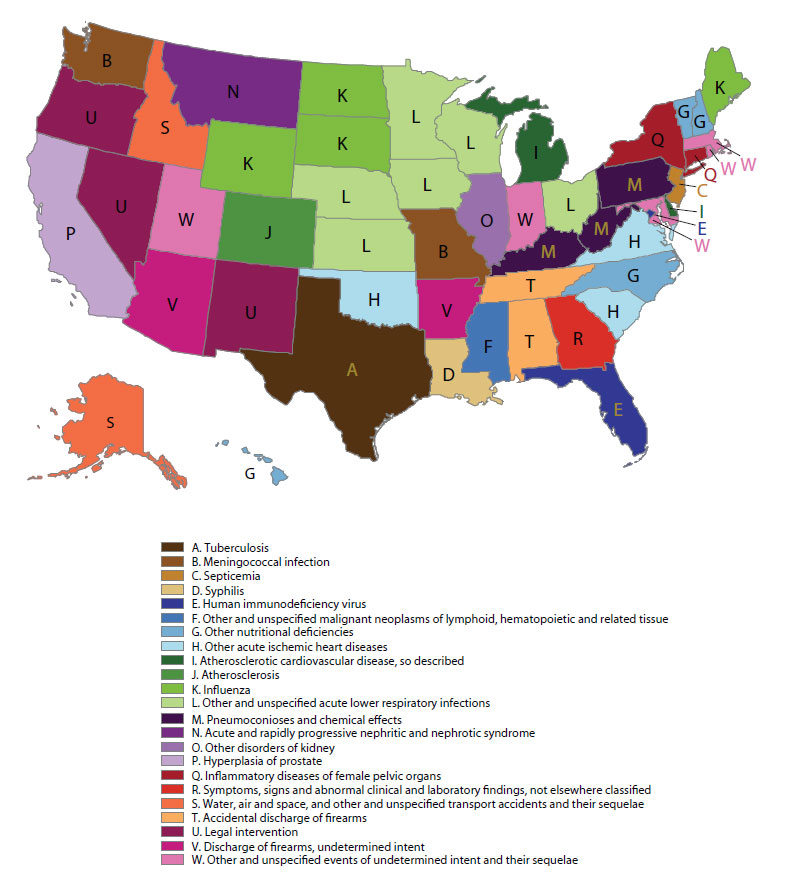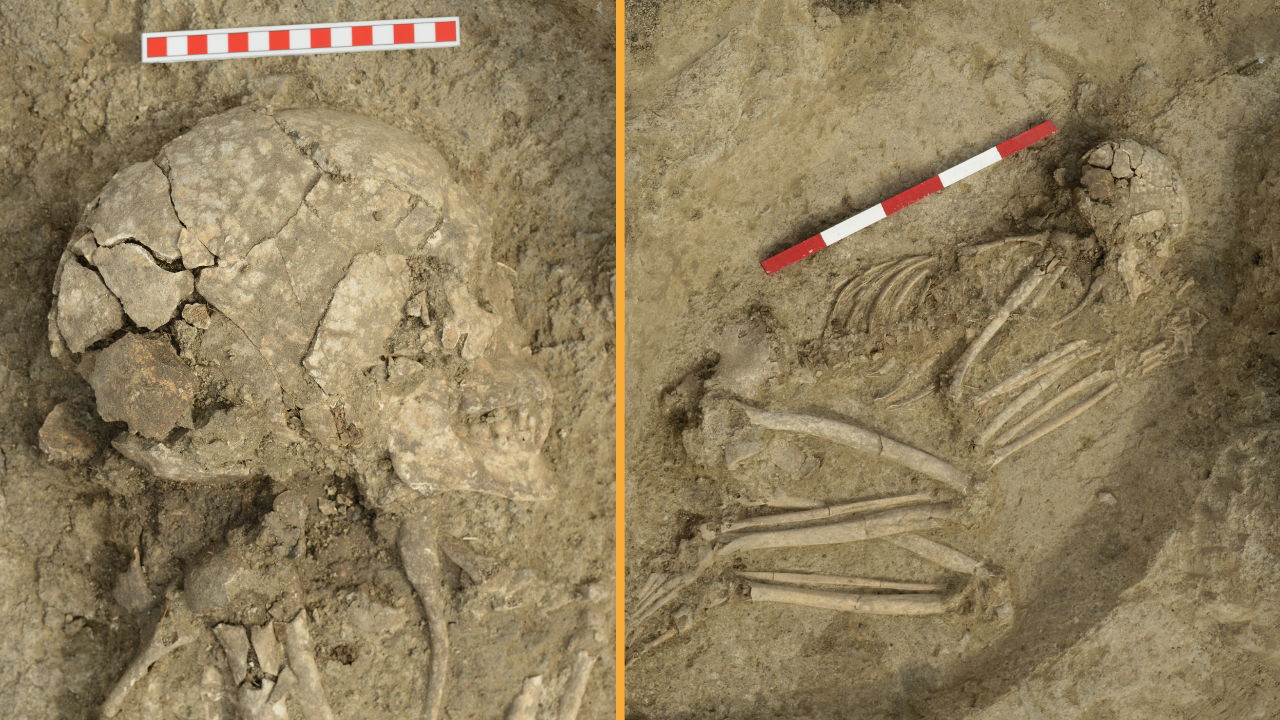Death in Your State: Map Shows 'Most Distinctive' Causes

The most common killers in the United States are well known — heart disease and cancer. But there are other, less common causes of death that are actually much more typical in certain states compared with the nation as a whole.
Now, a new map shows these so-called "most distinctive" causes of death for each state.
The map is "a somewhat of a colorful and provocative way of starting some conversations and highlighting some unusual things that are going on," said study co-author Francis Boscoe, a research scientist at New York State Cancer Registry.
In some cases, the most distinctive cause of death was not so surprising, the authors wrote. The flu was the most distinctive cause of death in several northern states, including Maine, North Dakota, South Dakota and Wyoming. Deaths from plane or boat accidents were the most distinctive causes of death in Alaska and Idaho. And pneumoconioses, a group of lung diseases caused by inhaling certain dusts, were the most distinctive causes of death in mining states, including Pennsylvania, West Virginia and Kentucky.
But other findings were more unexpected: Sepsis was the most distinctive cause of death in New Jersey, and deaths by legal intervention — which are deaths caused by law enforcement officers, excluding legal executions — accounted for the most distinctive cause of death in New Mexico, Nevada and Oregon.
"Although chronic-disease-prevention efforts should continue to emphasize the most common [national] conditions, an outlier map such as this one should also be of interest to public health professionals," the researchers wrote in their report, published with the map in the May issue of the journal Preventing Chronic Disease. [Hidden STD Epidemic: 110 Million Infections in the US (Maps)]
To determine the most distinctive causes of death for each state, the researchers started with a list of 113 causes of death from the Centers for Disease Control and Prevention.
Get the world’s most fascinating discoveries delivered straight to your inbox.
Then, for each state, the researchers calculated the rate of death from each cause, and divided this by the rate of death from that particular cause in the United States as a whole. This let the researchers see which states had higher rates of death from certain causes than the rest of the United States.
For example, in Alaska, the rate of death for plane and boat accidents was about 4 deaths per 100,000 people, while the national rate is 0.6 deaths per 100,000 people. This means that deaths from plane or boat accidents are seven times more likely in Alaska than in the United States as a whole, Boscoe said. And in this case, this "distinctive" cause of death makes sense intuitively, because some parts of Alaska are accessible only by boat or plane, Boscoe said.
In some cases, the most distinctive cause of death was responsible for quite a large death toll: HIV was the most distinctive cause of death in Florida, where about 15,000 people died from the disease. But in other cases, the most distinctive cause of death was still quite rare. Syphilis was the most distinctive cause of death in Louisiana, but there were only 22 deaths from the disease.
In fact, the most distinctive causes of death are often rare; for 22 states, the total number of deaths from a "most distinctive" cause of death was less than 100.
"If something is almost nonexistent everywhere in the country, but there's a handful of them in one state, then that could show up" on the map, Boscoe told Live Science.
The researchers noted that differences in how certain states label a cause of death could influence the results. Causes of deaths are supposed to be coded on death certificates in a standard way, but some states may do things differently, Boscoe said.
For example, 24 percent of all U.S. deaths from a category called "other acute ischemic heart diseases" were in Oklahoma, even though this state has only about 1 percent of the U.S. population. There are a few different ways that you can have death by heart disease, "and if you don't know which one it is, it goes into this 'other' bin," Boscoe said. "In general, states don't make use of this other bin," but they do in Oklahoma, Boscoe said.
Being aware of these differences could lead some states to adjust how they code causes of death, he said. "Simply being aware of the issue often is enough to cause the change ... it can often be a simple fix," Boscoe said.
Follow Rachael Rettner @RachaelRettner. FollowLive Science @livescience, Facebook& Google+. Original article on Live Science.

Rachael is a Live Science contributor, and was a former channel editor and senior writer for Live Science between 2010 and 2022. She has a master's degree in journalism from New York University's Science, Health and Environmental Reporting Program. She also holds a B.S. in molecular biology and an M.S. in biology from the University of California, San Diego. Her work has appeared in Scienceline, The Washington Post and Scientific American.


